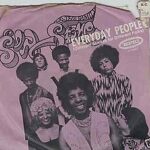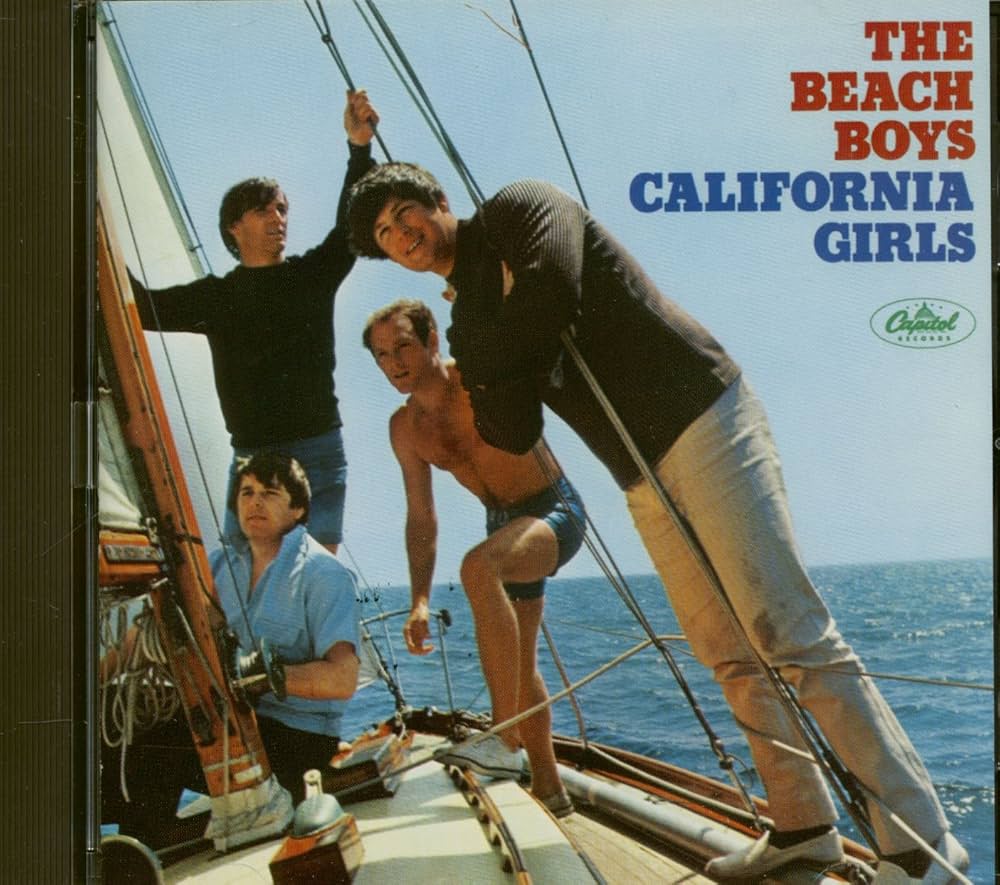 Sly and the Family Stone’s Every Day People, released in 1968 on their landmark album Stand!, stands as one of the most profound and socially resonant tracks of the late 1960s. Beyond its infectious funk and soul rhythms, the song delivers a timeless message of equality, unity, and acceptance that resonates as powerfully today as it did over fifty years ago. With its catchy hooks, joyful instrumentation, and socially conscious lyrics, Every Day People exemplifies Sly Stone’s ability to blend entertainment and social commentary, creating a track that is both fun and revolutionary.
Sly and the Family Stone’s Every Day People, released in 1968 on their landmark album Stand!, stands as one of the most profound and socially resonant tracks of the late 1960s. Beyond its infectious funk and soul rhythms, the song delivers a timeless message of equality, unity, and acceptance that resonates as powerfully today as it did over fifty years ago. With its catchy hooks, joyful instrumentation, and socially conscious lyrics, Every Day People exemplifies Sly Stone’s ability to blend entertainment and social commentary, creating a track that is both fun and revolutionary.
The song opens with a warm, approachable groove, immediately setting the tone for a track that is both musically engaging and socially meaningful. From the first bassline to the rhythmic interplay of drums and percussion, the rhythm section establishes a groove that is effortless and inviting. Larry Graham’s bass, a masterclass in tone and funk technique, provides a pulsating foundation that drives the song forward. The bass is melodic as well as rhythmic, weaving seamlessly with the drums to create a danceable yet sophisticated sonic landscape. This foundation allows the other instruments, vocals, and harmonies to shine without ever feeling overcrowded.
Vocals and Harmonies: A Collective Celebration
Sly Stone’s vocal delivery in Every Day People is central to the song’s power. His voice is soulful and warm, carrying a sense of authenticity and sincerity that reinforces the song’s message. What makes the track particularly compelling is the way Sly employs group vocals. The Family Stone’s harmonies are a highlight, creating a sense of community and togetherness that mirrors the lyrical content. Lines like “I’m no better and neither are you / We’re all the same, yes we’re all the same” are delivered with a combination of gentle insistence and celebratory energy, emphasizing inclusivity and equality.
The call-and-response sections, a staple in gospel and funk traditions, further enhance the song’s communal feel. The interplay between Sly’s lead vocals and the chorus of voices creates a layered, dynamic texture that draws the listener in. The performance feels participatory, as if the band is inviting the audience to sing along and internalize the song’s message. It’s this collective vocal approach that gives Every Day People its enduring power: it’s not just Sly speaking—it’s a shared declaration of unity.
Lyrics: Simplicity Meets Depth
At first glance, the lyrics of Every Day People appear simple, almost conversational. Yet beneath this simplicity lies a profound message. The song addresses social divisions, prejudices, and inequalities, advocating for mutual respect and understanding. The repeated line, “Different strokes for different folks,” is emblematic of Sly’s philosophy: celebrate diversity and embrace individuality without judgment.
The genius of the lyrics lies in their accessibility. Sly Stone conveys a powerful social message without alienating the listener. There is no heavy-handed moralizing—just a clear, rhythmic, and memorable articulation of equality and acceptance. The song’s directness allows it to resonate across generations, making it both historically significant and perpetually relevant. It’s a rare instance in pop music where a socially conscious message is seamlessly integrated with a compelling, danceable groove.
Instrumentation: Funk, Soul, and Innovation
The instrumentation on Every Day People is exemplary, showcasing Sly and the Family Stone’s innovative approach to funk and soul. The arrangement is tight but dynamic, blending elements of rock, funk, and gospel into a cohesive whole. Horns punctuate the rhythm with crisp stabs, adding brightness and energy to the track. These horn lines, though relatively sparse, enhance the song’s momentum and provide a celebratory flair that reinforces the lyrical themes of joy and unity.
Sly’s keyboard work adds harmonic richness, providing subtle chordal textures that enhance the song’s groove without overshadowing the other instruments. The interplay between keyboards, bass, and drums exemplifies the Family Stone’s tight musicianship, a hallmark of the band’s sound. Every instrument feels purposeful, contributing to the song’s rhythmic and melodic architecture while allowing the vocals and message to remain at the forefront.
Rhythm and Groove: Danceable Yet Thoughtful
The song’s rhythmic foundation is deceptively sophisticated. While it encourages movement and dancing, there is a subtle complexity in the syncopation and interplay between instruments. The drums maintain a steady, infectious beat, while the bass and percussion create nuanced rhythmic patterns that keep the listener engaged. The groove is infectious yet understated, allowing the song to function both as a social anthem and as a track that works purely on a musical level.
The rhythm section’s precision allows the track to remain dynamic throughout. Even during the chorus and vocal-heavy sections, the instrumentation maintains a propulsive energy, ensuring that the listener remains captivated. This balance between groove and melodic content is one of the reasons Every Day People has endured: it satisfies both the intellect and the body, appealing to listeners who appreciate musicality as well as social commentary.
Cultural Context and Historical Significance
Released in 1968, Every Day People arrived during a period of intense social change in the United States. Civil rights movements, anti-war protests, and cultural shifts were challenging societal norms, and music often served as a reflection and amplification of these changes. Sly and the Family Stone, as one of the first racially integrated bands with both male and female members, embodied the very diversity and inclusivity that Every Day People celebrates.
The song’s message of equality, acceptance, and community resonated strongly within this context. It was both timely and timeless—a call for unity amidst division, delivered through a medium that reached a broad audience. Unlike many politically charged songs that rely on confrontation or anger, Every Day People promotes understanding and celebration of difference, making its message enduring and universal.
Catchiness and Accessibility
Part of the song’s brilliance lies in its accessibility. The melodies are memorable, the chorus is singable, and the groove is irresistible. Yet beneath this surface simplicity is a sophisticated musical arrangement that rewards repeated listening. The song’s structure—alternating verses, chorus, and call-and-response sections—ensures variety and keeps the listener engaged throughout.
The “different strokes for different folks” refrain is a masterstroke of simplicity and memorability. It’s a line that listeners immediately internalize, and it encapsulates the song’s philosophy in a few words. Its accessibility, combined with the song’s infectious energy, has contributed to its enduring presence in popular culture. It has been covered, sampled, and referenced countless times, cementing its status as a cultural touchstone.
Legacy and Influence
Every Day People has had a profound influence on subsequent generations of musicians and audiences. Its blend of funk, soul, rock, and gospel created a template for socially conscious pop music that is both musically sophisticated and widely appealing. Artists across genres have cited Sly and the Family Stone as an inspiration, particularly for their ability to combine political messaging with musical innovation.
The song’s influence is also evident in the rise of funk and soul in mainstream pop during the late 1960s and 1970s. Its infectious rhythms, tight instrumentation, and vocal harmonies helped shape the sound of popular music in ways that continue to resonate today. It stands as a testament to the power of music to entertain, inspire, and provoke thought simultaneously.
Live Performances: Energy and Engagement
Experiencing Every Day People live amplifies its impact. Sly and the Family Stone’s dynamic stage presence, combined with their tight musicianship and vocal harmonies, transforms the song into a communal celebration. Audience participation, particularly in the call-and-response sections, reinforces the song’s themes of unity and shared humanity.
The live energy of the track is infectious, with the rhythm section, horns, and vocals creating a kinetic experience that mirrors the song’s message. Watching the band perform, it’s clear that the music is about more than entertainment—it’s about bringing people together, creating a sense of collective joy and engagement that transcends the stage.
Conclusion
Every Day People is more than just a funk and soul classic; it’s a socially conscious anthem that continues to resonate across generations. Sly and the Family Stone combined infectious groove, memorable hooks, and socially relevant lyrics to create a song that entertains while challenging listeners to embrace equality, understanding, and unity. Its enduring appeal lies in its ability to marry musical sophistication with accessibility, making it both fun to listen to and meaningful to experience.
The song’s instrumentation, vocals, and harmonies demonstrate the Family Stone’s exceptional musicianship, while its lyrics deliver a powerful, timeless message. The interplay of groove and melody, humor and sincerity, makes Every Day People a model of socially conscious pop music that remains as relevant today as it was in 1968.
Ultimately, Every Day People captures the essence of Sly and the Family Stone’s vision: music as a vehicle for joy, unity, and social change. It is a song that celebrates diversity, encourages acceptance, and invites listeners to dance while contemplating deeper truths. Its message is simple, its groove is infectious, and its legacy is profound. Over fifty years later, the song remains a testament to the power of music to bridge differences, inspire togetherness, and create a shared sense of humanity.


